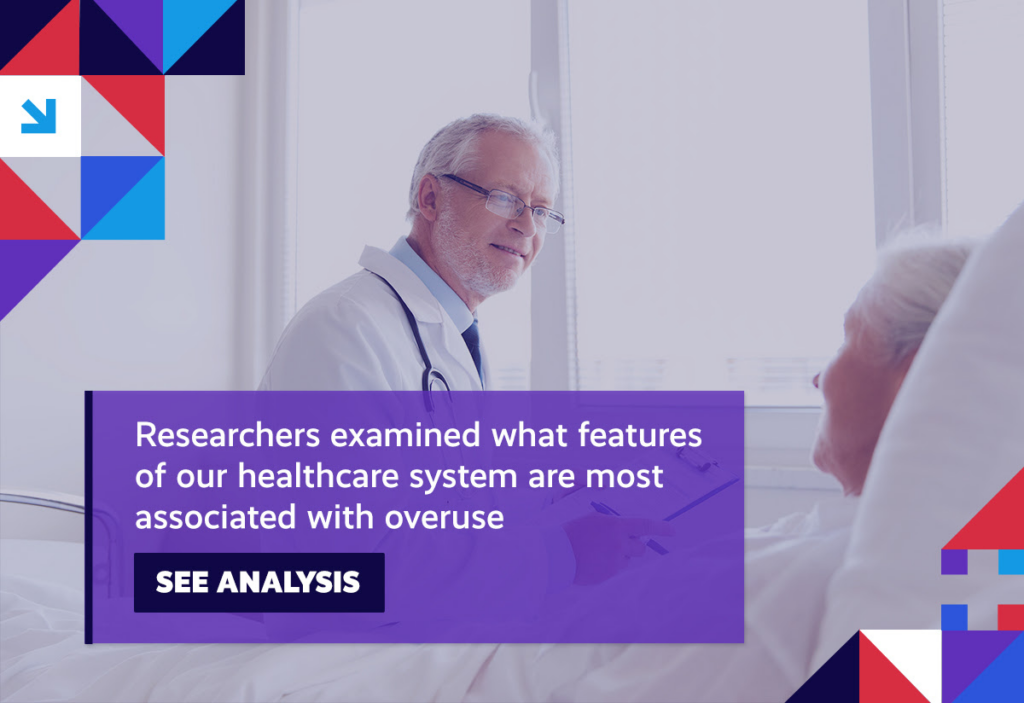A new study draws attention to the growing issue of unnecessary care; meanwhile, hospital mergers continue to reshape the care delivery landscape; Medicare Advantage enrollment is projected to grow; and, drugmakers exploit patent loopholes to maximize revenue.
We encourage you to stay involved as implementation efforts surrounding healthcare reform progress. Visit the Health Action Network and be sure to let us know what’s on your mind.
Item of the Week

Week in Review
Unnecessary Care: A new analysis from researchers at Johns Hopkins University took a comprehensive look across our healthcare delivery model in an attempt to determine what conditions were most likely to result in unnecessary or low-value care. Published in JAMA Health Forum, the study found that health systems that employed fewer primary care physicians, had higher bed counts, or were investor-owned, had a higher prevalence of providing unnecessary care. Identifying who’s responsible, researchers laid out, is critical to our addressing the issue of rising costs in our healthcare system. In addition to being, both, physically and psychologically harmful to patients, waste is also financially burdensome and consistently pointed to as driving up costs. In fact, a study from 2019 estimated that overuse contributes as much as $100 billion in wasted healthcare spending. This new analysis also named specific systems across the country as being among the worst offenders – a list that includes large and small systems, as well as for-profits and nonprofits serving rural communities and in large metropolitan areas.

Hospital Mergers: It was also recently reported that hospital price hikes can be expected in the near future. While these prices have increased more slowly during the pandemic, experts predict that hospitals, responding to the same inflationary pressures that have impacted consumers across the economy, will look to increase their prices in the next round of their longer-term contract negotiations. A separate analysis shines a light on another key driver of overall healthcare costs, specifically, hospital consolidation. According to the data, the volume of transactions slowed down last year – but, the size of the deals was up significantly. Last year, more than 16 percent of the deals announced were categorized as ‘mega mergers’ in which the smaller partner or seller had annual revenues over $1 billion. Those transactions were nearly twice the percentage seen in 2020 and the highest in six years.
MA Enrollment: As of the start of this year, more than 28.5 million beneficiaries are now enrolled in the Medicare Advantage (MA) program. That represents a nearly 9 percent increase from this time last year – and, based on previous year trends, it’s expected that enrollment in MA plans this year will eclipse the government’s own prediction of 29.5 million enrollees in 2022. As featured in last week’s newsletter, polling would seem to indicate that those enrollment numbers will only continue to go up, with a majority of beneficiaries expressing overwhelming support for the program. A recent study also highlights why more enrollees are selecting MA plans over traditional fee-for-service (FFS) Medicare. According to that analysis, beneficiaries eligible for, both, Medicare and Medicaid, prefer MA over FFS. The data revealed that beneficiaries enrolled in the MA program had an easier time accessing care compared to their FFS counterparts. Further, not only did they seek out preventive care more often, they also saw lower healthcare costs.
Rx Costs: New research into how Big Pharma manipulates patent rules to protect their profits flies in the face of the pharmaceutical industry’s concerted effort to deflect blame for their role in driving up drug prices. Researchers found that drugmakers, on average, earned $18.6 billion in total global revenues for a new drug – 10 times more than the average cost of new drug development. Further, despite only accounting for 4 percent of the world’s population, US consumers pay a disproportionately high percentage of those revenues (56 percent). By exploiting patent protections and extending regulatory exclusivity, pharmaceutical manufacturers are able to deploy the kind of anti-competitive practices that have been shown to increase prescription drug costs for patients.
Spotlight

| You can keep up with the latest by following the Health Action Network on Twitter and by liking us on Facebook. And, be sure to check us out on LinkedIn, too. As always, let us know if there’s something you’d like to see covered in a future newsletter. |
